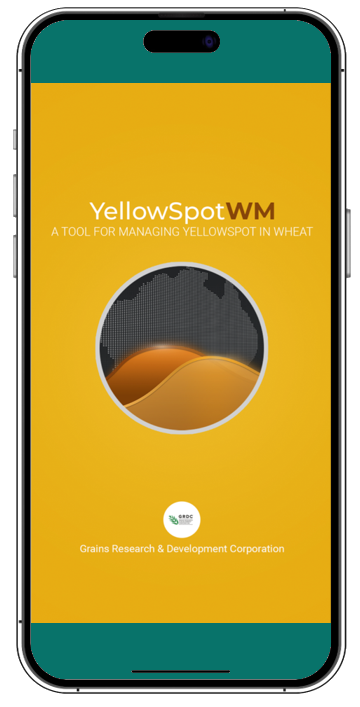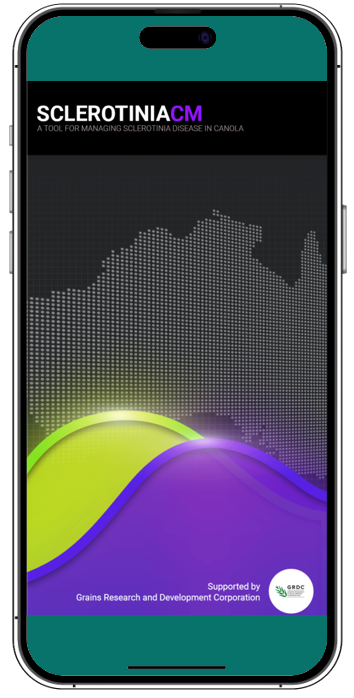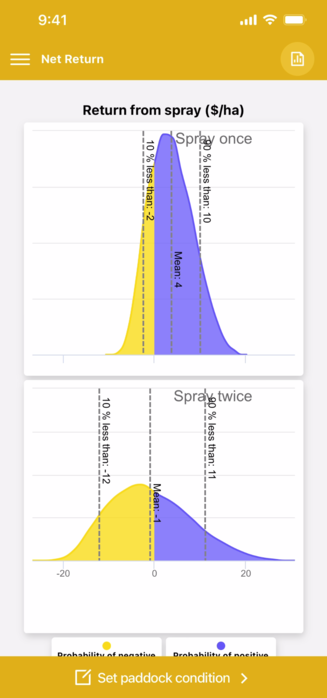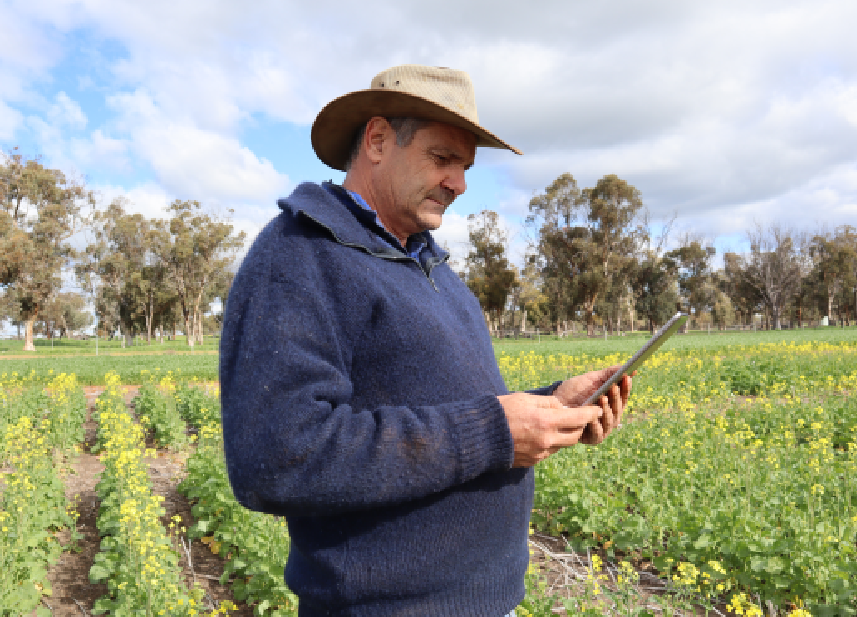
YellowSpotWM & Sclerotinia CM Decision Support Tools
HOW THE APPS CAN HELP!
Back Paddock Company is pleased to announce that we are assisting with the extension of the functionality of the YellowSpotWM and SclerotiniaCM management tools currently available as mobile phone and tablet apps. These apps are and have been available to growers for some time for use on mobile phones and tablets.
Through the ‘disease epidemiology, modelling and delivery of decision support tools’ project DAW2112-002RTX these and other decision support tool Apps are set to become integrated functions within the crop rotation planning and mobile recommendation apps in the Back Paddock Company platform.
They will be available as integrated decision support tools to assist advisers and growers in making the best management decisions around disease control and crop rotation strategies.
Download DPIRD apps now from the links below!

GRDC/DPIRD APPS HELP FARMERS MANAGE CROP DISEASE IN CHANGING CLIMATE
GRDC and the Department of Primary Industries and Regional Development (DPIRD) in WA have co-funded researchers to develop Apps that provide decision support to farmers and advisers for managing crop diseases across Australia. It is the role of these organizations and industries “to expand the value of the agriculture sector and to safeguard our agricultural resources from biological threats.” In a changing climate, the prevalence of diseases is also changing, and apps such as YellowSpotWM and SclerotiniaCM are being made available to assist farmers assess the economic impact of various fungicide management decisions. The apps are based on contemporary scientific data and decades of research that focuses on yield losses caused by disease under Australian environmental conditions. ’Overall, wheat diseases have the potential to cause very significant costs for farmers. Measures to overcome those potential costs, including varietal choice, cultural practices, crop rotations and the use of fungicides, play an important role in the location and nature of wheat production in Australia. Even after these measures have been taken to reduce losses, Australian farmers still suffer significant losses each year from wheat diseases.’
GRDC |p. 6 | The Current and Potential Costs from diseases of Wheat in Australia
“In the face of climate change, a phenomenon that few now dispute, farmers must take advantage of all tools that can assist in the predicted outcomes of weather conditions as they are forecast to impact on crop disease and yields. Diseases that were common in one area will inevitably reduce whilst increasing in other locations in tune with natures ebbs and flows of temperature and moisture.” In the research report CRDC – The Current and Potential Costs from diseases of Wheat in Australia (- Gordon M. Murray and John P. Brennan) researchers “postulate that the potential loss from six diseases can be associated with changes in climatic conditions since the last survey. The increases in potential loss from stem rust and stripe rust could be caused by temperature increases that have occurred over much of the wheatbelt, while drier conditions could be associated with increased losses from crown rot. The drier conditions could be associated with a decline in potential loss by Septoria tritici blotch and take-all while warmer winter conditions may be associated with a decline in common bunt. (p 7)” “Nationally, the highest average annual potential yield loss of 20.8 per cent was from stripe rust. Within GRDC regions, stripe rust also caused the highest potential loss of 44.3 per cent in the Northern Region. Cereal cyst nematode caused the highest potential loss of 28.1 per cent in the Southern Region while Septorianodorum blotch and yellow spot were highest at 12.9 per cent in the Western Region (Table 5.1, see p.22).”

The YellowSpotWM decision support tool assists users in making informed decisions about the management of Yellow Leaf Spot/Tan spot, (Pyrenophora tritici-repentis), a stubble-borne fungal leaf disease of wheat. Crop rotation history and future planning are particularly important in managing this disease as the fruiting bodies lie dormant on wheat stubble and in favorable, cool moist conditions, release spores that reinfect subsequent wheat crops.
The principal function of the app is to allow the assessment of multiple criteria (input by growers for specific circumstances) to determine if the user can expect a “positive return on investment” when treating the disease with foliar fungicides. For example in the screenshot to the left, what are the probable net returns from one vs two sprays of fungicide to treat yellow spot?YellowSpotWM App compares the likely profitability of different disease management strategies, including paddock selection, variety choice, in-furrow fungicide and foliar fungicide. YellowSpotWM considers costs, yield benefits, grain price and seasonal conditions to give a best case/worst case/ most likely estimates of financial return. In all management decisions, local knowledge plays an important role in taking into account other factors that may affect Yellow Leaf Spot. Growers and advisers can examine the anticipated returns in $/ha from applying one foliar fungicide application or two under different crop circumstances of target yield or a yield range, grain price or price range and varied production costs. Growers and consultants who utilize the Adviser Manager platform for maintaining records will have this data stored for each paddock, ensuring convenient access for use in the yellowSpotWM App risk assessments. Target and expected yields are calculated in t/ha for the different scenarios of one or two foliar fungicide sprays. Advisers using the app for calculations around the profitability and expected yield response outcome due to a fungicide application will be able to display data and graphed scenarios that can easily be forwarded to clients via email from the app.
SclerotiniaCM is a decision support tool, designed to assist canola growers with the management of Sclerotinia stem rot in canola on a paddock-by-paddock basis by comparing the likely profit and loss from applying a foliar fungicide during flowering. The App draws on several years of national field trials and observations as well as many years of experimental data and expert knowledge, to forecast the likely result and economic return of spraying this problematic disease. SclerotiniaCM takes account of costs, yield benefits, grain price and seasonal conditions to give the best case /worst case/most likely estimates of fungicidal control.
Sclerotinia is a difficult disease to manage in canola, as spray decisions are made before visible disease symptoms appear. Hence growers often apply fungicide to control sclerotinia based on previous disease severity in a paddock and current weather conditions. Advisers want more guidance on fungicide application decision making. Sclerotinia CM provides evidence-based information, estimating returns from fungicide applications for individual paddocks.
The SclerotiniaCM app was developed by GRDC “Disease epidemiology and management tools for Australian grain growers project led by the Western Australian Department of Primary Industries and Regional development (DPIRD). This app is now available for phones and tablet devices.

Above: Frank Panizza, Nunile (Toodyay) farmer in canola
